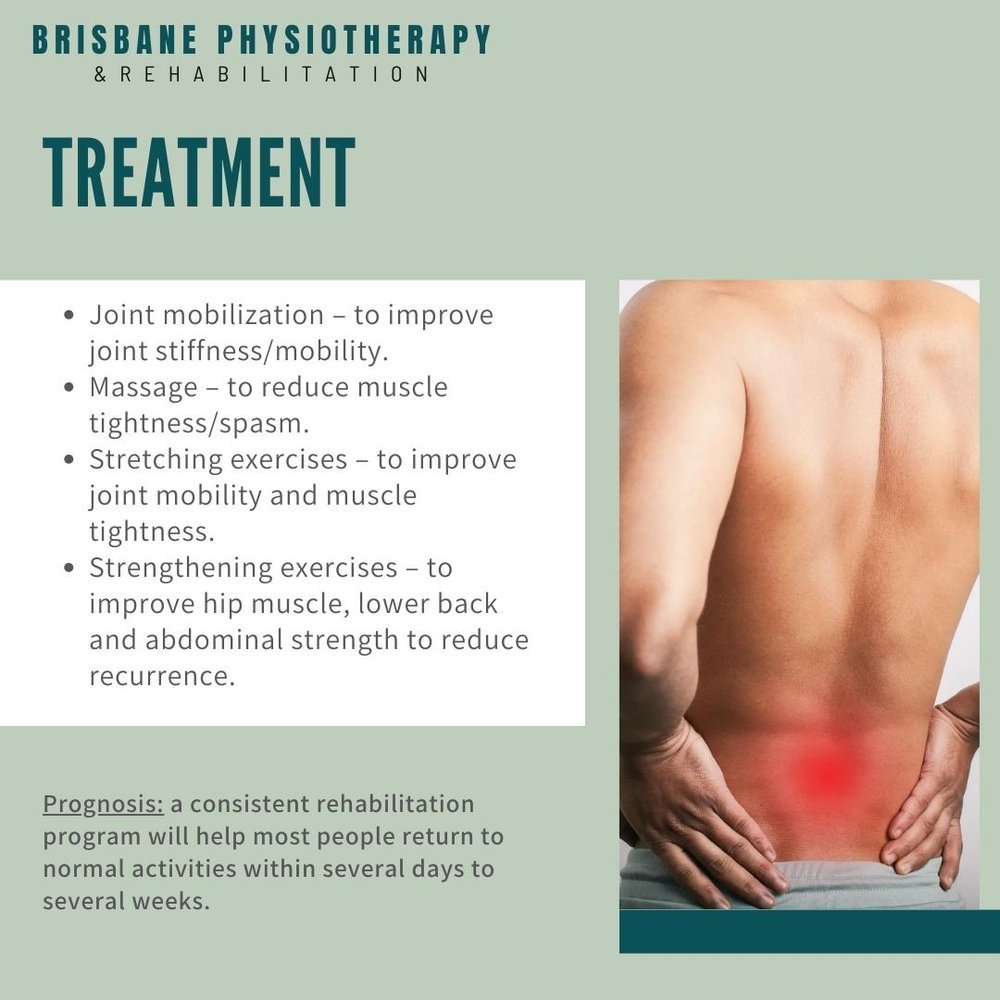What is Lower Back Facet Joint Dysfunction?
Understanding your injury – Brisbane Physiotherapy Edition.
Overview of Lower Back Facet Joint Dysfunction:
Description
- Facet joints are pairs of small joints that attach the bones of the spine (vertebrae). These joints have opposing surfaces of cartilage, which limits friction and shearing between the bones. The facet joints are also load bearing joint of the lower back
- Facet joint dysfunction is an inflammation or wearing out of the facet joints.
- Mechanism of injury: occurs from repetitive stress to the spine because of excessive weights or movements. Aging or trauma may also cause the joints to wear down.
Presentation
- Unilateral pain
- Traumatic/sudden onset
- Pain that increases with twisting or aching the body
- Reduced lower back movement into extension and towards the affected side
- May have referred pain to the buttocks or back of the thighs
- Aggravating activities: Standing, walking, bending backwards
- Easing factors: Sitting
- Local muscle spasm – lower back and hip muscles
Lower Back Facet Joint Dysfunction Management
Treatment
- Joint mobilization – to improve joint stiffness/mobility
- Massage – to reduce muscle tightness/spasm around the affected joint
- Stretching exercises – to improve joint mobility and muscle tightness
- Strengthening exercises – to improve hip muscle, lower back and abdominal strength to reduce recurrence
Prognosis: a consistent rehabilitation program will help most people return to normal activities within several days to several weeks.


